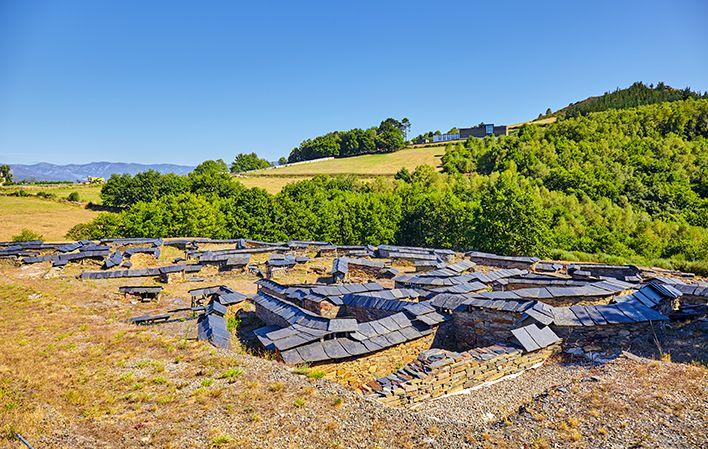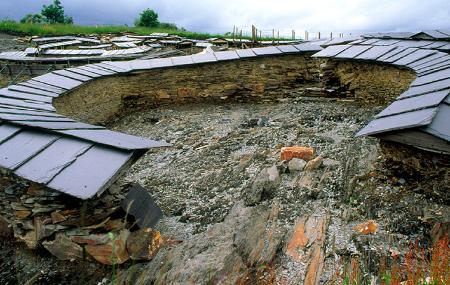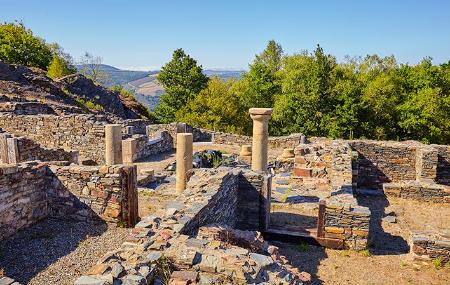
- Title Grandas de Salime Western Asturias
- Address Address: ■ 33737 - Castro
- Phone Phone: 985 627 143
- Email Email: chaosamartin@grandasdesalime.es
- Site Site: http://www.chaosamartin.es
- Documents Documents: More information about the Chao Samartín Hillfort
Although the existence of ancient fortifications on the site was mentioned in the geographical dictionaries produced during the 18th and 19th centuries, the Chao Samartín was recognised as a castro in 1967 by José Manuel González, following a visit made in the company of José Lombardía Zardaín.
A decade later, the event that would determine the beginning of the archaeological excavations and the revision of what was known about the castro world in the west of Asturias took place.
The protagonist of those events, José María Navieras Escanlar, "Pepe el Ferreiro", described the event in the regional press in great detail.
His passionate account sums up the chance discovery of a hut under the, at that time, farmland of the Chao, which for months became the archaeological entertainment of a group of willing neighbours.
Mr. Naveiras' concern made possible the conservation of that extraordinary material and the knowledge of its existence by university researchers.
The archaeological excavations began in 1990 as a result of the review, during the elaboration of the archaeological inventory of the council, of those pieces kept in the Ethnographic Museum of Grandas de Salime.
The excavation campaigns continued regularly until 2009, as part of the Archaeological Plan of the Navia Basin, under the supervision and sponsorship of the Principality of Asturias, the Association of Friends of the Navia Historical Park and the collaboration of Grandas de Salime Town Council.
Until 1994 the excavations were directed by Elías Carrocera Fernández, professor at the University of Oviedo, and from 1995 onwards by the team of technicians coordinated by Ángel Villa Valdés.
The origin of Chao Samartín as a human settlement dates back to the Bronze Age when, around 800 BC, a first fortified enclosure was established on its upper esplanade.
During the Iron Age its defences were renewed on several occasions and in Roman times it became a prosperous administrative capital, until an earthquake destroyed the settlement in the 2nd century AD.
Built in: 4th century BC
Guided tours from October onwards
Tuesday to Saturday: 13:00 h. and 17:30 h.
Sundays and public holidays: 13:30 h.
Closed: Mondays Closed: 24, 25, 31 December and all of January.
Adults: €4
Children under 4 Free
Children 4-16 and over 65s: €2.50
Groups of 20+, prior arrangement: €1.50
Declared an Asset of Cultural Interest of the Principality of Asturias.



